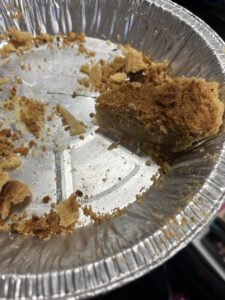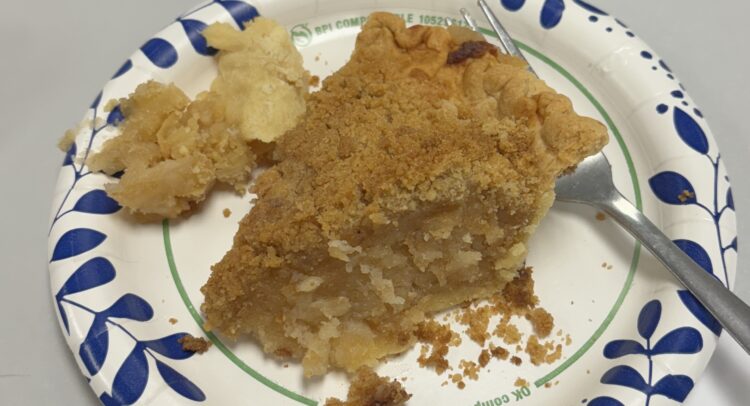By Cole Brumback, Ximena Martinez, Isaac Quintana, and Heather Soto
Do you think you could tell the difference between crackers and apples? Scholars at Haas Hall Rogers are experimenting with chemistry in the kitchen.
 The new science elective, Chemistry of Foods, is led by faculty member Alex Hamlin. The interactive course is an opportunity to make dishes, bonding chemistry and culinary arts.
The new science elective, Chemistry of Foods, is led by faculty member Alex Hamlin. The interactive course is an opportunity to make dishes, bonding chemistry and culinary arts.
Hamlin said the class originated because his second block was listed as Chem II and no one was enrolled in it.
“We thought we’d offer Chemistry of Foods in the class, so we thought that would be a fun way to get an elective and also maybe pass on some life skills,” said Hamlin. “We’re taking a technical approach to cooking sometimes.”
Through the creation of apple pie, students dove deeper into the history and the science of the kitchen.
One of the first major assignments was an apple pie experiment. Hamlin said scholars prepared both a traditional apple pie and an imitation apple pie, a recipe that substitutes apples with Ritz crackers.
The idea of creating the apple pie using crackers is not a new thing. It dates back to the Great Depression when apples were scarce, and the people found a new way to create replicative flavors.
“Well, it [the recipe] was from the textbook … but the actual imitation apple pie recipe came from the Great Depression,” said Hamlin.
The challenge of creating the pie was also presented among the scholars.
“One of our main problems was that it took a long time for our water to boil, and it never got as hot as we wanted it to be,” said Jozie Moll, a junior enrolled in the course. “This meant that the imitation apple pie didn’t turn out very well, and it wasn’t very appealing.”
As scholars experiment in the kitchen, safety remains a top priority, as well as sanitizing the stations and equipment.
“We went over how we actually are supposed to use a knife to cut everything, and I’m there watching,” said Hamlin.
Moll sees the benefits of the course – one recipe at a time.
“The task itself, however, was a great way to learn about how crucial small steps can be to the outcome of a dish,” said Moll.

